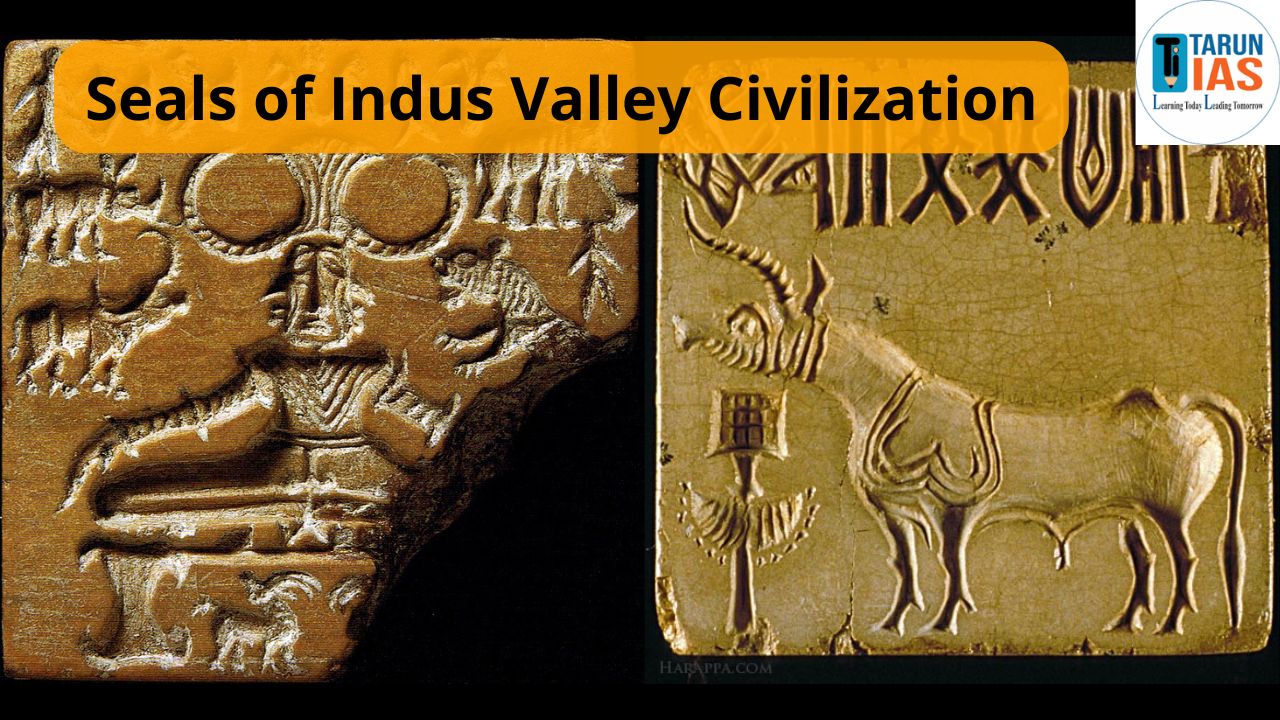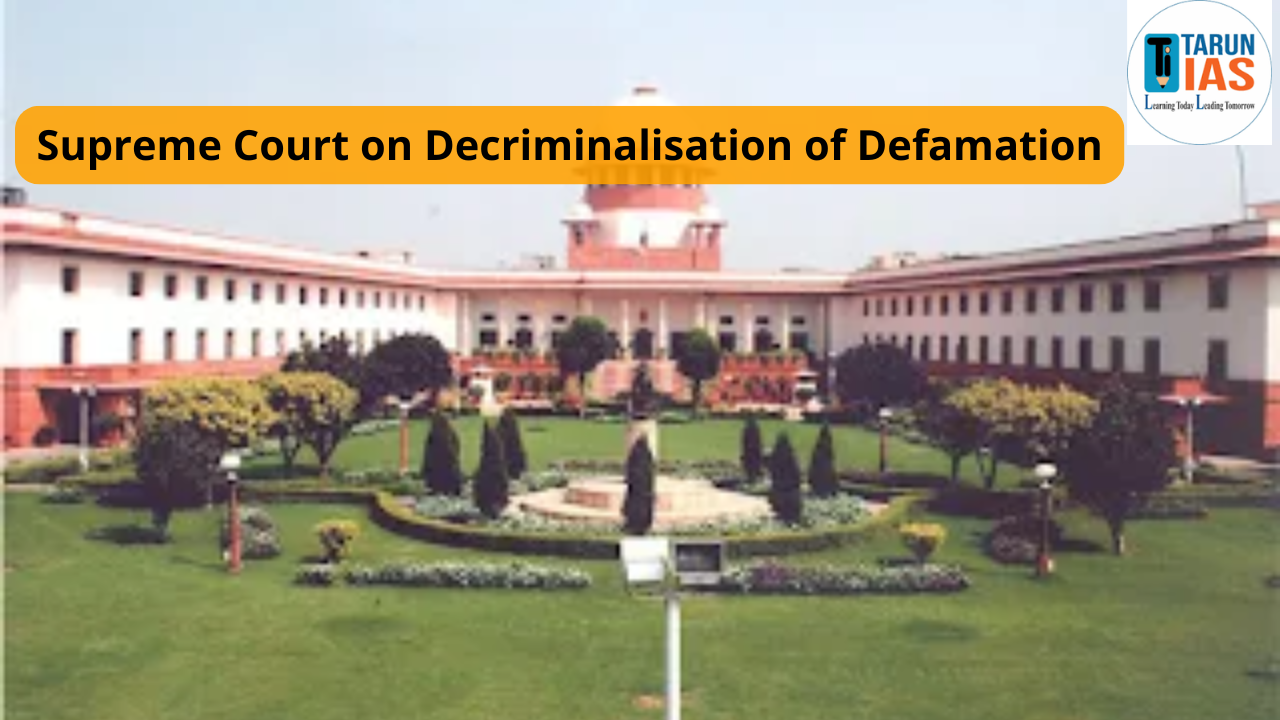The Seals of Indus Valley Civilization of the Indus Valley Civilization are one of the most important discoveries made by archaeologists. These small, flat objects were usually made from a soft stone called steatite. They were carved with great skill and often had images of animals, humans, and some unknown symbols on them.
- These compact objects usually made of steatite carry deep cultural value and offer a window into the economic and religious life of the Harappans.
- Seals of Indus Valley Civilization were small, intricately carved objects used by the people of the Indus Valley Civilization (2600–1900 BCE) for multiple purposes ranging from trade and administration to religion and personal identity.
- These artefacts are among the most iconic remnants of South Asia’s earliest urban culture and serve as vital keys to understanding its socio-economic and religious framework.
Material and Manufacturing Techniques for Seals of Indus Valley Civilization
Most Seals of Indus Valley Civilization were made from steatite, a soft stone (also known as soapstone) that could be easily carved and then fired at high temperatures to increase its durability and hardness. This firing process not only preserved the engravings but also gave the Seals of Indus Valley Civilization a smooth, lustrous finish.

- Other materials used in seal-making include
- Faience – a glazed, glassy material used for decorative purposes
- Copper and Bronze – rare, likely for ceremonial or elite usage
- Terracotta and Shell – occasionally found, possibly used locally
Seals of Indus Valley Civilization typically measure 2 to 4 cm², and are square or rectangular in shape. However, archaeologists have also uncovered circular Seals of Indus Valley Civilization and amulet-type seals with perforations likely worn around the neck or wrist.
Geographical Distribution of Seals of Indus Valley Civilization

To date, archaeologists have uncovered over 2,500 seals from various Indus Valley Civilization sites. Major excavation zones include
- Harappa (Punjab, Pakistan)
- Mohenjo-daro (Sindh, Pakistan)
- Lothal and Dholavira (Gujarat, India)
- Rakhigarhi (Haryana, India)
- Kalibangan and Banawali (Rajasthan and Haryana)
Importance of Indus Valley Seals
The Seals of Indus Valley Civilization are not just archaeological objects; they represent a civilization that valued organization, identity, and communication. Though the script on the Seals of Indus Valley Civilization remains undeciphered, their uniformity, craftsmanship, and distribution reflect a highly structured society with advanced urban planning, economic networks, and symbolic systems.
Classification of Seals of Indus Valley Civilization
Seals of Indus Valley Civilization are classified based on script, symbols, animals, deities, and artistic patterns.
Seals of Indus Valley Civilization Based on Shape and Material

Shapes of Seals
- Square/Rectangular Seals
- The majority of Seals of Indus Valley Civilization are square or rectangular in shape, suggesting standardization.
- This consistency points to a regulated system, possibly for administrative efficiency.
- Circular Seals
- Far less common and possibly ceremonial in nature. Their rarity implies selective use, perhaps tied to religious or elite contexts.
- Amulet/Pendant-Type Seals
- Some Seals of Indus Valley Civilization contain holes for stringing—clearly intended for personal adornment or use as pendants. Their wearable nature ties them to identity and belief systems.
Based on Function
- Administrative Seals
-
- Used to stamp goods, seal packages, or mark property. Their consistency and utility in trade underscore their bureaucratic role.
- Religious or Symbolic Seals
- Depict divine figures or mythological motifs. Likely used in rituals or as sacred objects, symbolizing divine protection.
- Amuletic Seals
- Intended to be worn on the body. These could signify protection, social status, or even act as talismans.
Physical Features and Design of Seals of Indus Valley Civilization
Seals of Indus Valley Civilization were typically square or rectangular, made from steatite, and finely engraved with animals, script, and symbols.
Reverse Side of Seals of Indus Valley Civilization
- Typically flat or slightly convex, designed for creating impressions on pliable surfaces like clay, wax, or cloth.
- Some have grooves or incised strips to assist in sealing or tying, showcasing practical utility.
Obverse Side of Seals of Indus Valley Civilization
- Richly engraved with animal motifs, script, or composite figures.
- Common animals include unicorn bulls, humped zebu bulls, elephants, and rhinoceroses.
- Usually carries Harappan script—consisting of 5 to 6 signs, though some contain up to 26 characters.
Symbols in Seals of Indus Valley Civilization
The iconography of Seals of Indus Valley Civilization reveals deep symbolic meaning—unicorn bulls, wild animals, and yogic figures like the Pashupati hint at religious beliefs, clan identity, and spiritual traditions.
Pashupati Seals of Indus Valley Civilization

- The Pashupati Seal is a small square-shaped steatite (soft stone) seal discovered from the site of Mohenjo-daro, one of the main cities of the Indus Valley Civilization. It dates back to around 2500–2000 BCE. This seal features a central human-like figure, sitting in a meditative posture, surrounded by various animals.
- The word ‘Pashupati’ is derived from Sanskrit – ‘Pashu’ means animal, and ‘Pati’ means lord or master. So, ‘Pashupati’ translates to ‘Lord of the Animals’. In Hindu tradition, this title is often used for Lord Shiva, who is seen as the protector of all creatures and nature.
- In 1928–29, archaeologist Sir John Marshall was the first to interpret this figure as an early representation of Shiva, due to its posture, horned headgear, and association with animals. He compared it to Shiva’s yogic and meditative image known from later Hindu scriptures.
Features of the Pashupati Seals of Indus Valley Civilization
Central Figure (Human-like)
- A man-like figure is sitting cross-legged in a posture similar to Mulabandhasana or early yogic pose.
- He wears a horned headdress, which may represent divine or royal power.
- Some scholars argue the figure is three-faced, but due to erosion, it’s hard to confirm.
- The hands rest on the knees, giving the impression of deep meditation or spiritual focus.
Animals Around the Figure
- On either side, four wild animals are carved:
- Elephant (top left)
- Tiger (top right)
- Rhinoceros (bottom left)
- Buffalo (bottom right)
- Below the main figure, two deer or goats are shown facing the center.
Indus Script
- There is a short line of symbols from the Indus script above the figure.
- This script is still undeciphered, so we don’t know the exact meaning.
The Unicorn-Bull Seal (Mohenjo-daro)
- Shows a one-horned animal with a stylized hump and a trough in front.
- Accompanied by 4–6 script signs above.
- Found in large numbers—suggesting a universal administrative or economic symbol.
The Elephant Seal (Lothal)
- Shows a well-decorated elephant with visible anklets and an arched body.
- Likely symbolizes power, wisdom, or trade authority.
- May have been associated with merchant identity or regional symbols.
Harappan Script
Contains 400+ symbols, still undeciphered despite intense scholarly efforts. Always placed before the main image, indicating its importance. Likely used for naming, categorization, or certification—maybe even an early writing system meant for elite or commercial use. The uniformity suggests a regulated writing system, though its exact linguistic basis remains unknown.
Functional Roles of Indus Valley Seals of Indus Valley
Indus Valley Seals of Indus Valley Civilization played multiple roles used in trade, administration, rituals, and personal identity reflecting a complex urban culture.
-
Economic and Trade Administration
-
- Seals of Indus Valley Civilization were crucial in packaging and transport. A container bearing a seal implied ownership, origin, and authenticity.
- Possibly used like modern trademarks or tags certifying standard and quality.
-
Long-Distance Trade
-
-
- Found in places as far as Mesopotamia (modern-day Iraq), such as in cities like Ur and Lagash.
- Cuneiform texts mention Meluhha believed to be the Harappan region. Seals of Indus Valley Civilization may have served as trade passports or credentials.
- Some Mesopotamian houses had Indus Seals of Indus Valley Civilization impressed on clay, showing trust and official acceptance.
-
-
Religious and Ritual Purposes
-
- Many Seals of Indus Valley Civilization depict divine symbols and are suggestive of rituals or prayers.
- The presence of fire altars or worship scenes on some Seals of Indus Valley Civilization implies ceremonial usage.
-
Identity and Social Structure
-
- Amulet-style Seals of Indus Valley Civilization were likely worn for personal identity, family lineage, or group association.
- Could also act like badges of occupation or caste markers in a proto-societal framework.
Manufacturing Techniques of Seals of Indus Valley Civilization
Harappans carved soft steatite, fired it for durability, and engraved detailed motifs using sharp tools, showcasing advanced craftsmanship and standardization.
Crafting Process
- Quarrying Steatite
- Steatite was sourced from regions like the Kirthar Hills and Rohri Hills in present-day Pakistan.
- Shaping and Sizing
- The stone was cut and filed into standard shapes mostly square or rectangular.
- Engraving
- Using copper or bronze tools, artisans carved intricate designs in negative relief, ensuring clarity in impressions.
- Firing
- The engraved steatite was then fired to harden, locking the image permanently.
- Drilling and Finishing
- Holes were drilled in some for stringing, indicating dual purposes practical and ornamental.
Evidence of Specialization
- The consistency in size, script, and style points to organized production.
- Possibly crafted in urban workshops or state-regulated guilds.
- Advanced division of labor is evident carvers, finishers, and designers likely worked as teams.
Seals of Indus Valley Civilization is a Silent Witness of Lost Civilization
While we may never fully decode the Harappan script, the Seals of Indus Valley Civilization still speak to us through their designs, craftsmanship, and distribution. They were not just objects of utility, but also of art, identity, and ideology.
- They inform us about
- The economic dynamism of the Harappan people.
- The presence of complex governance and organized trade.
- An evolving religious consciousness and symbolic world.
- A society deeply rooted in craft, culture, and communication.
Seals of Indus Valley Civilization Across Harappan Sites
The distribution of Seals of Indus Valley Civilization across Harappan sites reveals regional diversity Harappa and Mohenjo-daro show rich motifs, while Lothal and Dholavira reflect localized trade and symbolic patterns.
| Site | Notable Seal Characteristics |
| Harappa | Over 500 Seals of Indus Valley; a rich variety of unicorn bulls, humped cattle, and proto‑Shiva iconography. |
| Mohenjo‑daro | 380 Seals of Indus Valley; some rare circular Seals of Indus Valley Civilization depicting elephants and enigmatic symbols. |
| Lothal | 60+ Seals of Indus Valley; distinctive with craft-focused iconography like boats, suggesting local trades. |
| Dholavira | Seals of Indus Valley Civilization repeating the unicorn‑bull; small but high in density per unit area. |
| Ganweriwala | Fewer excavations; but Seals of Indus Valley Civilization found are stylistically overlapping with Harappa and Mohenjo‑daro. |
Script on Seals of Indus Valley Civilization
While the imagery on Harappan Seals of Indus Valley Civilization is immediately visible, the inscriptions etched above the motifs remain one of the most enduring mysteries of the ancient world.
- Length and Placement: Most inscriptions carry 5–6 signs, placed in a horizontal row above the main image. In rare cases, the number may go up to 26.
- Reading Order Ambiguity: Scholars are still debating whether the script is left-to-right, right-to-left, or even boustrophedon (zigzag).
- Lack of Rosetta Stone: No bilingual or multilingual inscription has been found. This makes decipherment extremely difficult.
- Functional Use: Until deciphered, these short texts are assumed to act like guild marks, family identifiers, or ownership tags, rather than a full writing system.
- Current Research: Frequency analysis and contextual comparison are the primary tools scholars are using to break this code. But for now, these remain cryptic messages from the ancient world, guarding secrets of trade, religion, and administration.
Interpretations and Debates on Seals of Indus Valley Civilization
Despite decades of excavation and analysis, scholars still debate the exact function and symbolism of these Seals of Indus Valley. Some of the main interpretations include:
-
The Unicorn Thesis
-
- The unicorn bull, found on hundreds of Seals of Indus Valley, doesn’t exist in the natural world. This points towards mythic stylization.
- It may have symbolized a clan emblem, a powerful deity, or even a trade guild.
- The standardization across cities implies centralized importance.
-
Proto-Shiva or Pashupati Hypothesis
-
- The famous Pashupati Seal shows a horned figure seated in yogic posture, surrounded by animals.
- Some scholars interpret this as a proto-form of Lord Shiva, known as Pashupati (Lord of Animals).
- The horned headgear and meditative pose support the religious archetype, but critics call this speculative due to lack of corroborative evidence.
-
Script as a Functional Token
-
- Some experts believe that the script and image were symbolic rather than linguistic more like a logo or trademark.
- In the absence of long-form writing, Seals of Indus Valley Civilization might have simply acted as identifiers in a bureaucratic or trading context.
-
Ritual Talisman Hypothesis
-
- Seals of Indus Valley Civilization with composite or ambiguous figures may have served as spiritual or ritual talismans.
- These could have been used to invoke blessings, ward off evil, or carry religious messages.
-
Guild and Power Markers
-
- Seals of Indus Valley Civilization might have worked as trade permits, guild badges, or certificates of authenticity in long-distance transactions.
- Their presence in faraway lands like Mesopotamia supports this theory.
Conservation
Given their fragile nature, most Seals of Indus Valley Civilization are now housed under strict conservation conditions.
- Stored in climate-controlled vaults in major museums across India, Pakistan, the UK, and the US.
- Online platforms now offer 3D models and high-resolution images for academic use.
- Conservation ensures these millennia-old symbols of civilization remain accessible for future study.
Legacy and Broader Significance of Seals of Indus Valley Civilization of Indus Valley Civilization
The Seals of Indus Valley Civilization are not just archaeological relics. They are civilizational signatures—bearing testimony to
- A society with structured administration, even in the absence of monumental architecture or long texts.
- High levels of artisanal skill, balancing aesthetic precision with functional use.
Evidence of long-distance trade and inter-regional connectivity, especially with Mesopotamia and Central Asia. - Hints of a non-theocratic urban culture that possibly balanced ritual, economic pragmatism, and symbolism.
- Continued relevance in debates on writing systems, urban planning, and early Indian religious thought.
Conclusion
The Seals of Indus Valley Civilization of the Indus Valley Civilization are silent but powerful artefacts. Though compact in size, they contain immense meaning. From cryptic scripts to mythic beasts, from trade emblems to potential deities—each seal is a compact canvas of civilization.















